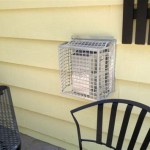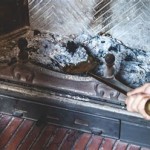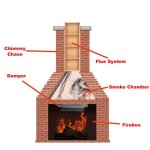Installing an Electric Fireplace In-Wall: A Comprehensive Guide
Electric fireplaces offer a convenient and aesthetically pleasing alternative to traditional wood-burning or gas fireplaces. They provide supplemental heat, create a cozy ambiance, and are relatively easy to install. Incorporating an electric fireplace directly into a wall presents a sleek, built-in look that can enhance the design of a room. This article provides a detailed guide on how to install an electric fireplace in-wall, ensuring a safe and successful installation.
Before commencing the installation process, it is crucial to carefully assess the existing wall structure. The type of wall, its load-bearing capacity, and the presence of electrical wiring or plumbing are all critical factors that must be considered. Ignoring these aspects can lead to structural damage, electrical hazards, or costly repairs. Furthermore, local building codes and regulations pertaining to electrical installations must be adhered to throughout the project.
This guide will walk through the necessary steps, from selecting the right fireplace model and preparing the wall, to wiring the unit and completing the final finishing touches. Safety should always be the top priority, and engaging qualified professionals when unsure is highly recommended. This article assumes a basic level of DIY proficiency and familiarity with electrical work; if there is any doubt, consulting a licensed electrician is strongly advised.
Key Point 1: Preparation and Planning
The success of an in-wall electric fireplace installation hinges on meticulous planning and preparation. This phase involves selecting the appropriate fireplace unit, assessing the wall's suitability, and gathering the necessary tools and materials.
Selecting an Electric Fireplace: The market offers a wide variety of electric fireplaces, differing in size, style, heating capacity, and features. The size of the room and the desired aesthetic are primary considerations. Measure the available wall space to determine the maximum dimensions of the fireplace unit. Consider the heating capacity (measured in BTUs) based on the room's square footage. Features such as adjustable flame settings, timers, and remote controls can enhance user experience. Ensure the chosen unit is specifically designed for in-wall installation, as not all electric fireplaces are suitable for this purpose. Verify it comes with all required mounting hardware and detailed installation instructions.
Wall Assessment: The wall's structure is a critical factor. Determine whether it is a load-bearing wall. Load-bearing walls support the weight of the structure above and should not be modified without consulting a structural engineer. Non-load-bearing walls, also known as partition walls, are generally easier to modify. Identify the wall framing materials (wood studs or metal studs) as this will influence the mounting method. Use a stud finder to locate the studs within the wall. These studs will serve as the anchor points for the fireplace mounting brackets. Check for any existing electrical wiring, plumbing pipes, or HVAC ductwork within the wall cavity using a stud finder with wiring detection or by carefully making a small exploratory hole.
Gathering Tools and Materials: A successful installation requires the right tools and materials. Essential tools include a stud finder, level, measuring tape, drywall saw or utility knife, drill with various drill bits, screwdriver (both Phillips head and flathead), wire stripper, wire connectors, electrical tape, and safety glasses. Materials include the electric fireplace unit, mounting brackets (usually included with the fireplace), drywall screws, electrical wiring (of appropriate gauge for the fireplace's power requirements), and drywall patching compound or joint compound for finishing.
Code Compliance: Local building codes often regulate electrical installations and fireplace installations. Contact the local building department to obtain information about any permits or inspections required for the project. Ensure all electrical wiring and connections comply with the National Electrical Code (NEC) or applicable local electrical codes. This is imperative for safety and to avoid potential legal issues.
Key Point 2: Installation Process
With the planning and preparation complete, the installation process can begin. This involves creating the opening in the wall, running electrical wiring, mounting the fireplace, and making the necessary electrical connections.
Creating the Wall Opening: Based on the fireplace unit's dimensions, mark the outline of the opening on the wall. Use a level to ensure the outline is square and plumb. Carefully cut along the marked lines using a drywall saw or utility knife. If encountering studs, they may need to be cut and reframed to create a suitable opening. This requires adding a header (a horizontal beam) above the opening to support the remaining wall structure. Consult a structural engineer if dealing with a load-bearing wall. Wear safety glasses to protect the eyes from drywall dust and debris.
Running Electrical Wiring: The fireplace requires a dedicated electrical circuit. Consult the fireplace's specifications to determine the required voltage and amperage. If an existing circuit is insufficient, a new circuit must be run from the electrical panel. Turn off the power to the circuit breaker before working with electrical wiring. Run the appropriate gauge electrical wire from the electrical panel to the location of the fireplace. Use cable staples to securely attach the wiring to the studs. Install an electrical outlet or junction box within the wall cavity near the fireplace location. This outlet should be accessible for easy disconnection if necessary. If unsure about electrical wiring, hire a licensed electrician.
Mounting the Fireplace: Follow the manufacturer's instructions for mounting the fireplace unit. Typically, this involves attaching mounting brackets to the wall studs using drywall screws. Ensure the brackets are level and securely fastened. Carefully lift the fireplace unit and slide it into the opening, aligning it with the mounting brackets. Secure the fireplace to the brackets using the provided hardware. Double-check that the fireplace is level and flush with the wall surface.
Making Electrical Connections: Connect the fireplace's power cord to the electrical outlet or junction box. Ensure all connections are secure and properly insulated using wire connectors and electrical tape. Double-check that the circuit breaker is still turned off before making any connections. Once all connections are made, turn on the circuit breaker and test the fireplace to ensure it is functioning correctly.
Key Point 3: Finishing and Safety Checks
The final steps involve finishing the wall around the fireplace and conducting thorough safety checks to ensure the installation is safe and compliant with regulations.
Finishing the Wall: After the fireplace is mounted, there will likely be gaps around the edges where the fireplace meets the wall. These gaps can be filled with drywall patching compound or joint compound. Apply the compound in thin layers, allowing each layer to dry completely before applying the next. Sand the compound smooth and flush with the wall surface. Paint or wallpaper the wall to match the surrounding decor. Decorative trims or surrounds can also be added to enhance the fireplace's appearance.
Safety Inspections: Before considering the installation complete, a thorough safety inspection is crucial. Verify that all electrical connections are secure and properly insulated. Check for any exposed wiring or potential fire hazards. Ensure the fireplace is properly grounded. Test the fireplace's heating function and flame settings to ensure they are working correctly. If any issues are identified, address them immediately.
Professional Consultation: Although this guide provides detailed instructions, it is essential to recognize the limitations of DIY projects. If there are any doubts or concerns about the installation process, it is highly recommended to consult with a qualified electrician or contractor. They can provide expert advice, ensure the installation is safe and compliant, and address any unforeseen issues that may arise.
Maintenance: Like any appliance, an electric fireplace requires regular maintenance to ensure optimal performance and longevity. Regularly clean the fireplace's vents to remove dust and debris. Inspect the electrical wiring and connections for any signs of damage. Replace any worn or damaged parts promptly. Follow the manufacturer's recommendations for maintenance and care.
By following these steps and prioritizing safety, a successful in-wall electric fireplace installation can be achieved, adding warmth, ambiance, and style to any living space.

How To Install Recessed Electric Wall Mount Fireplace

Recessed Or Wall Mount Electric Fireplace Installations Explained Touchstone Home S Inc

ᑕ❶ᑐ How To Install An Electric Fireplace Insert In Wall

How To Install An Electric Fireplace Diy Family Handyman

Electric Fireplace General Installation We Love Fire

How To Install An Electric Fireplace In The Wall Twin Star Internationaltwin International

How To Install A Wall Mounted Electric Fireplace Modern Blaze

How To Install An Electric Fireplace Diy Family Handyman

How To Install Fireplace In A Wall Magikflame

Belardo Home Recessed Wall Mounted Electric Fireplace Reviews








